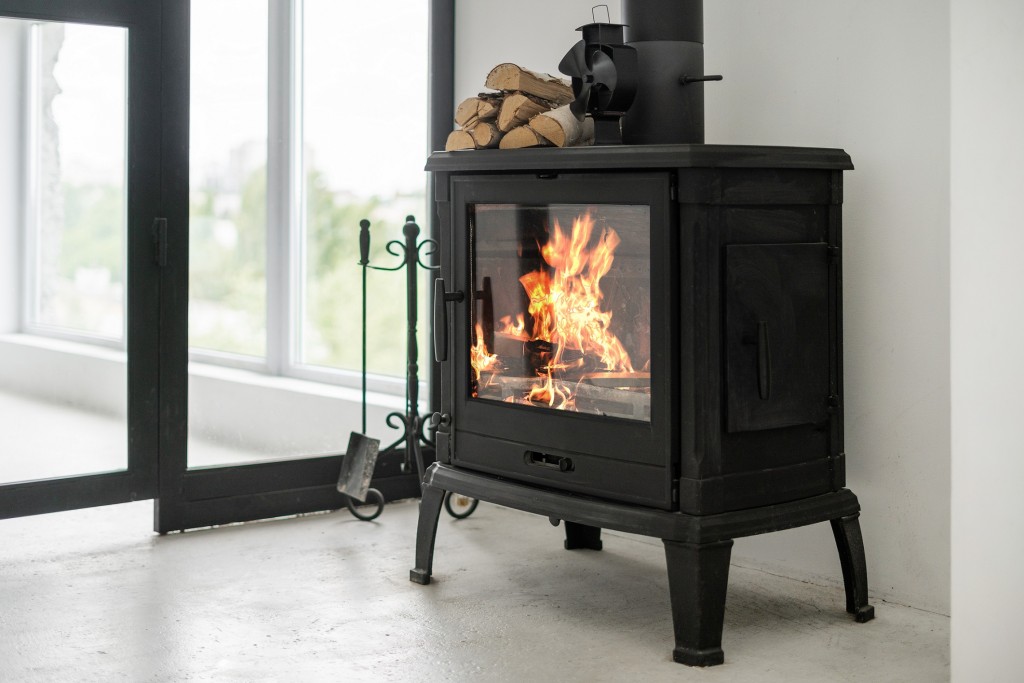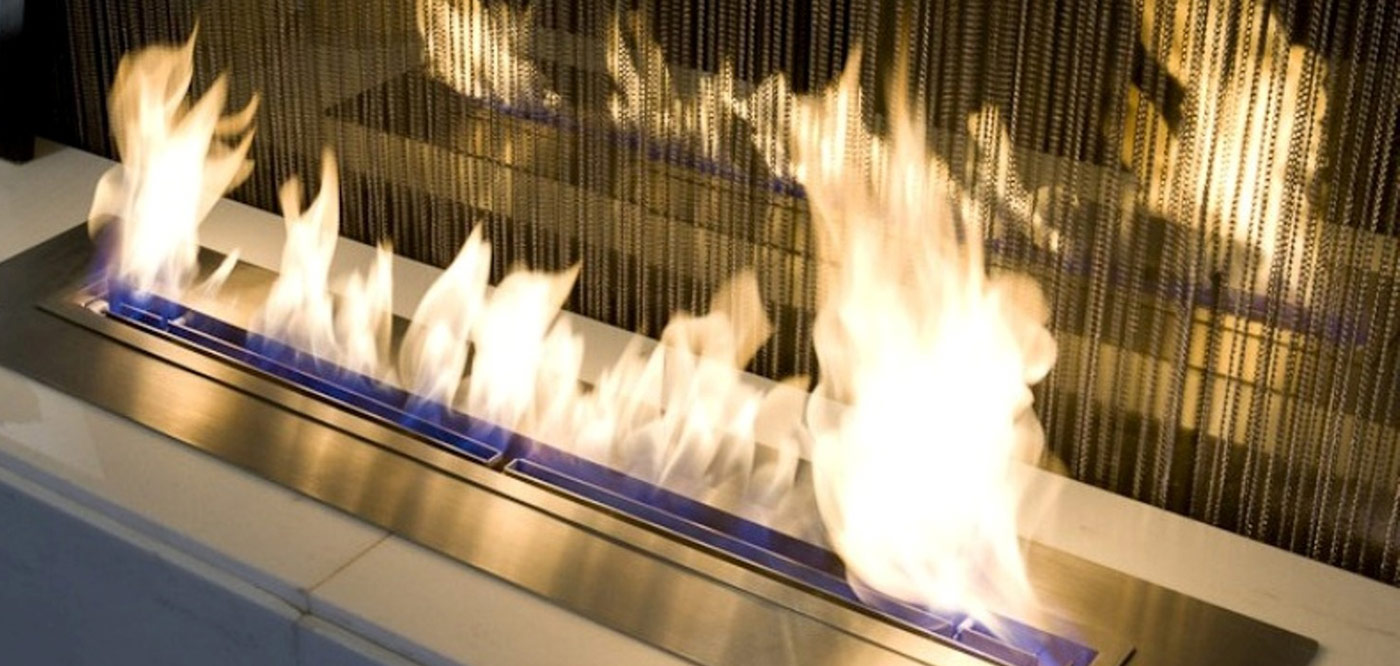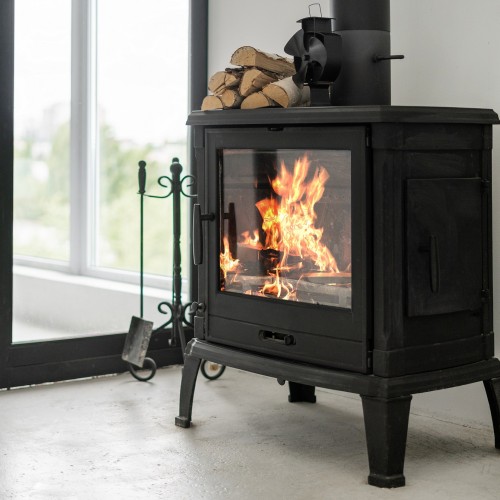When our rough winters decide to show what they’re made of, supplemental heating from a stove or fireplace is always welcome.
If you want to add a little comfort and warmth to cold winter nights, or try to make up for some of the central heating’s shortcomings, here are a list of things to consider.

Fireplace at lounge room standing on concrete floor with copy space. Home with modern interior, wooden log on top of fireside and equipment against white wall
Stoves and fireplaces
First, let’s distinguish between the two: a fireplace is a recessed installation, whereas a stove is a floor-mounted appliance.
Standards and regulations
Before starting anything, make sure you’re familiar with your municipality’s installation standards and regulations.
For example, with its regulation on the use of wood fireplaces and stoves, Montreal will soon outlaw any solid fuel appliance that releases more than 2.5 grams of particles an hour into the environment. Starting October 1, 2018, tolerated appliances will have to be certified by a city-approved organization (CSA, EPA).
This type of decision makes sense when you consider that in Montreal, burning wood is the second cause of emission of fine particles, after trucking.
This will therefore affect all stoves, fireplace inserts or prefabricated units in which wood or other solid fuels are burned. While we’re on the subject of solid fuels, these also include appliances that run on eco-logs, pellets and coal, but excludes gas or electrical fireplaces.
Pellet appliances
Wood pellet stoves are considered among the most eco-friendly options using solid fuel. It’s possible to find some that meet requirements such as those of the City of Montreal. The pellets are produced by recuperating waste from the sawmills, such as wood chips and sawdust. However, their cost is high. Purchasing a pellet appliance therefore isn’t an economical decision, but rather a comfort and environmental one.
Natural gas or propane stove or fireplace

Though it may not match the ambiance of a wood stove, this option generally produces more heat, for less money, and is quickly activated. It also releases fewer particle emissions. Since these are non-renewable fossil fuels, this solution remains inconvenient for the environment. Producing these fuels creates its share of greenhouse gas emissions, from extraction to transportation.
To reduce environmental impact, purchasing an eco-friendly appliance and maintaining it regularly is a must.
Insurance repercussions
It may be that installing a fireplace or stove increases your insurance premiums. In the eventuality of your appliance causing loss or damage, it’s in your best interest to let your insurer know about it ahead of time in order to not potentially reduce your coverage.
On a similar note, read our articles “Heated floors: what you need to do”, and “How to effectively prepare your home before winter hits”.
Keys takeaways
- Before starting anything, make sure you’re familiar with your municipality’s installation standards and regulations.
- Wood pellet stoves are considered among the most eco-friendly options using solid fuel.
- The pellets are produced by recuperating waste from the sawmills, such as wood chips and sawdust.
- It may be that installing a fireplace or stove increases your insurance premiums.

